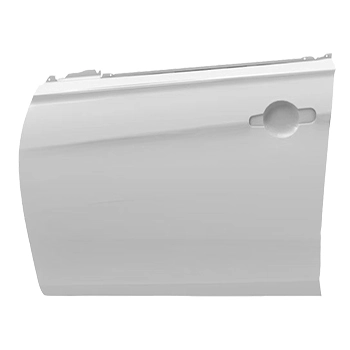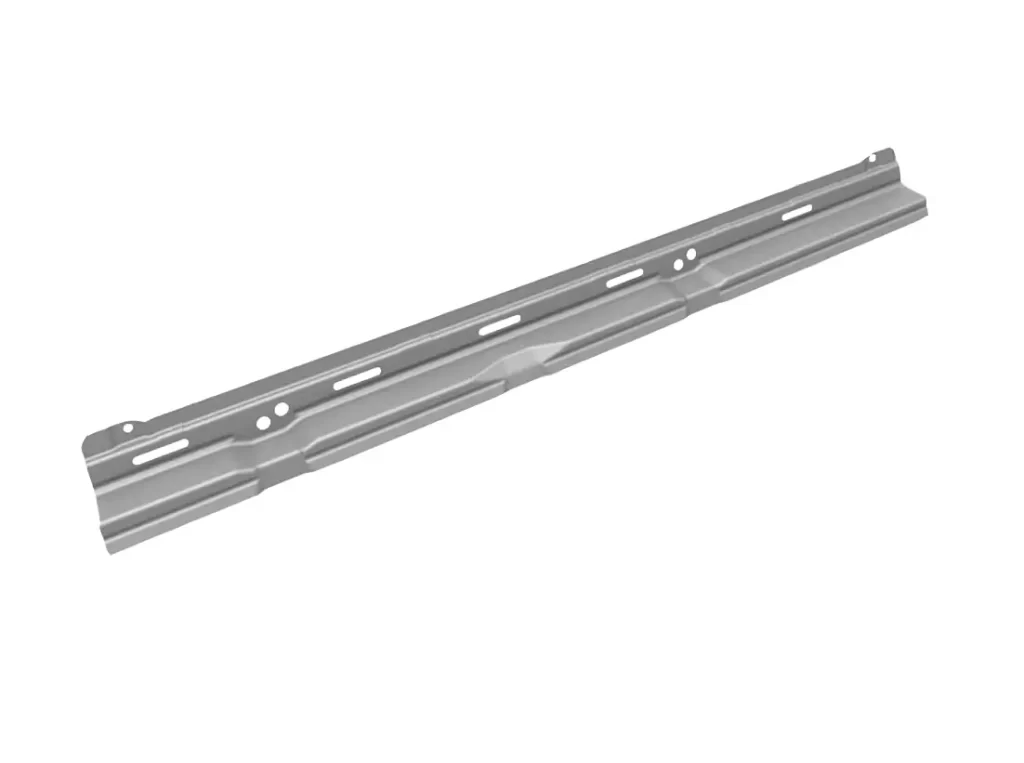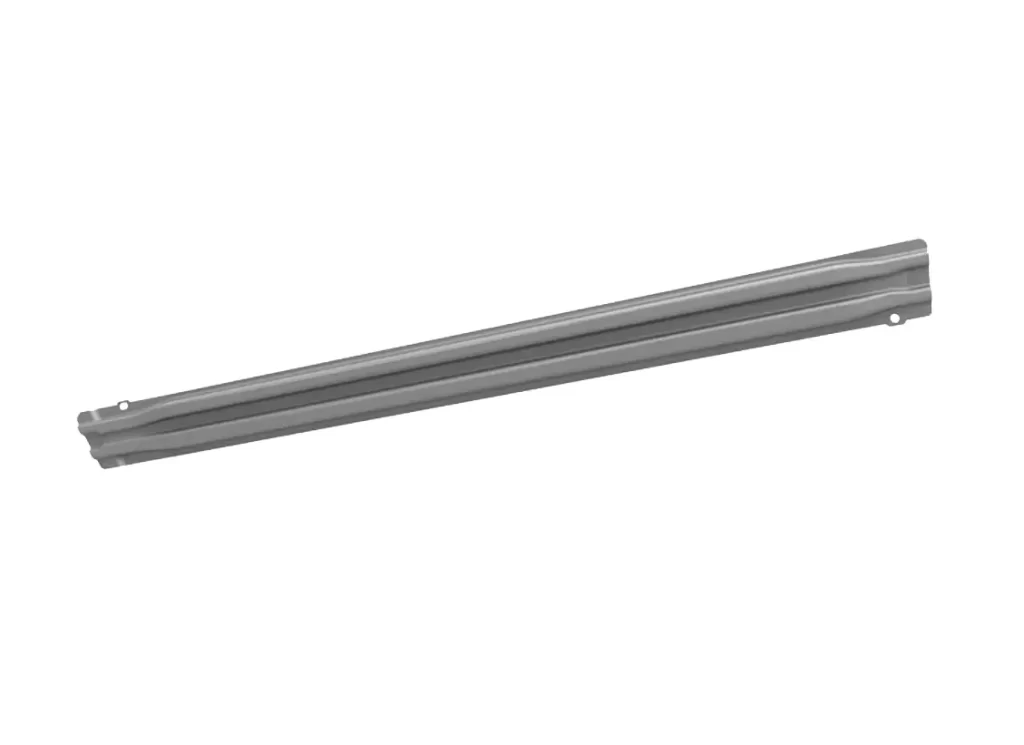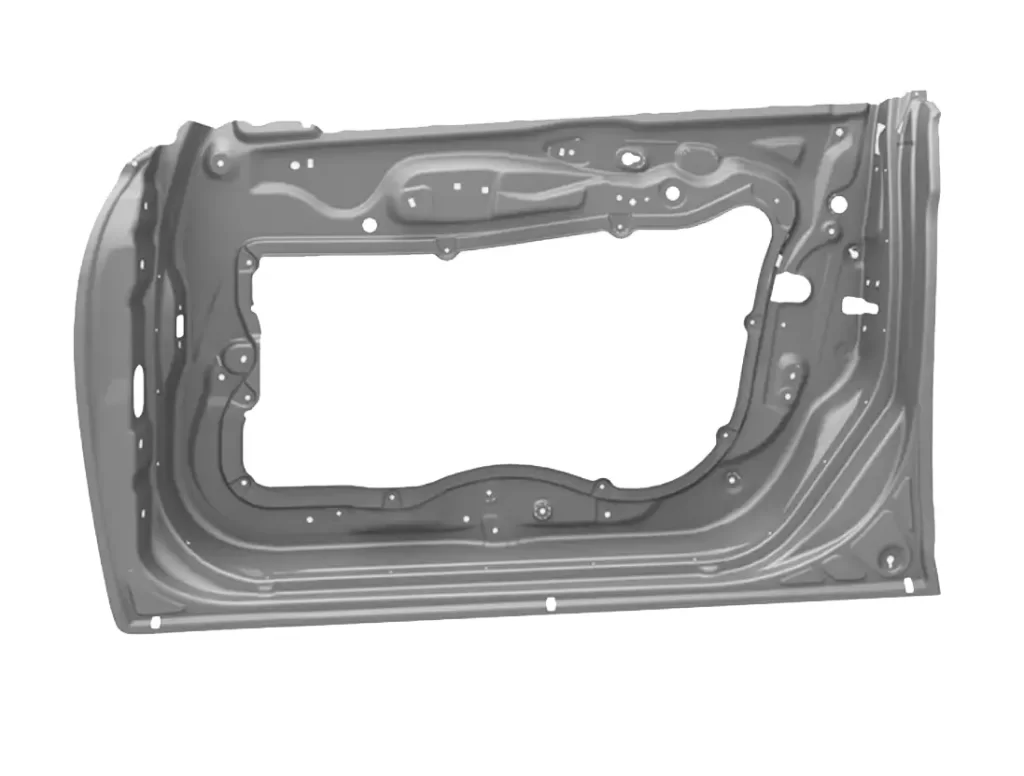Metallic material
Innovation | Professionalism
Integrity | Efficiency
Metallic material
Innovation | Professionalism
Integrity | Efficiency
The front door outer panel is a component of the front door of a vehicle. It is the outermost layer of the door and serves as a protective shield for the interior mechanisms of the door. The outer panel is usually made of sheet metal or another durable material, and is designed to withstand impact and resist damage from environmental factors such as sunlight, rain, and wind.
The front door outer panel is typically attached to the door frame with bolts or screws, and may have various features such as a handle, lock, or window. It may also be painted or coated with a protective finish to enhance its appearance and durability.
The outer panel is an important part of the door’s overall structure, providing strength and support for the door and contributing to the safety of the vehicle’s occupants. It can also play a role in sound insulation, helping to reduce exterior noise and vibration from entering the cabin.

The strength of steel is influenced by several factors, including the presence of carbon and nitrogen atoms, which can form solid solutions within the steel. These atoms can increase the strength of the steel by reducing the movement of dislocations, which are defects in the crystal structure of the metal. However, excessive amounts of carbon can also make the steel brittle.
To further enhance the strength of steel, strengthening elements such as phosphorus and manganese can be added. These elements can form interstitial solid solutions with the iron atoms, leading to an increase in the hardness and strength of the steel.
Once the steel has been processed and formed into its desired shape, it is typically baked at a specific temperature to further increase its strength through a process known as age hardening. During age hardening, the steel is heated to a specific temperature and held there for a period of time. This allows for the precipitation of small particles within the steel that act to inhibit the movement of dislocations, further increasing the strength of the material.
Steel that has undergone this process is commonly used in automotive outer coverings, which require high strength and durability. The organization of the steel is typically ferrite, a type of iron that is relatively soft and ductile, but can be hardened through the addition of other elements and heat treatments.
| Grade | YS(MPa) | TS(MPa) | EL(%) | r | n | BH2(MPa) |
| HC220BD+Z | 220-280 | 340-400 | ≥32% | ≥1.2 | ≥0.15 | ≥30 |
| HC220BD+ZF | 220-280 | 340-400 | ≥30% | ≥1 | ≥0.15 | ≥30 |
Grade: HC220BD+Z, HC220BD+ZF
C(max): 0.06
Mn(max): 1
Si(max): 0.5
The front door outer panel reinforcement plate is a component of the front door of a vehicle. It is a metal plate that is located between the outer door panel and the inner door panel. The purpose of this plate is to provide additional support and rigidity to the outer door panel.
In the event of a collision or impact, the front door outer panel reinforcement plate helps to absorb and distribute the forces of the impact, which can help to minimize damage to the vehicle and protect the occupants inside.

The microstructure of a material refers to the arrangement of its constituent particles or grains, and in this particular case, the material being referred to consists mainly of ferrite and martensite. The martensite structure is dispersed in the ferrite in the form of islands on the substrate, which means that the martensite forms small, isolated regions within the larger ferrite structure.
Dual phase steels are a type of steel that have been specifically designed to have a microstructure consisting of both ferrite and martensite. This microstructure gives them several desirable properties, including a low yield ratio and a high work hardening exponent. The yield ratio refers to the ratio of the yield stress to the tensile strength of a material, and a low yield ratio indicates that the material can undergo more deformation before it reaches its yield point. The work hardening exponent measures how much a material’s strength increases as it is deformed, and a high work hardening exponent indicates that the material can be easily formed into complex shapes.
In addition to these properties, dual phase steels also exhibit a phenomenon known as bake hardening, which refers to an increase in strength that occurs when the material is heated and then cooled. This makes them ideal for use in automotive structural parts, as these parts need to be able to withstand high levels of stress and deformation without failing.
| Grade | YS(MPa) | TS(MPa) | EL(%) | r | n | BH2(MPa) |
| HC340/590DPD+Z | 290-370 | ≥500 | ≥27% | – | ≥0.15 | – |
Grade: HC340/590DPD+Z
C(max): 0.15
Mn(max): 2.5
Si(max): 0.6
A car’s front door anti-collision beam is an important safety feature designed to protect passengers in the event of a side-impact collision. This beam is typically made of high-strength steel and is integrated into the structure of the car’s front doors to provide added protection against side-impact crashes. In a collision, the anti-collision beam absorbs and distributes the force of the impact, reducing the risk of injury to passengers inside the vehicle. The inclusion of this safety feature in modern cars is an important step towards improving overall vehicle safety and reducing the risk of serious injury or death in a collision.

The microstructure of a material refers to the arrangement of its constituent particles or grains, and in this particular case, the material being referred to consists mainly of ferrite and martensite. The martensite structure is dispersed in the ferrite in the form of islands on the substrate, which means that the martensite forms small, isolated regions within the larger ferrite structure.
Dual phase steels are a type of steel that have been specifically designed to have a microstructure consisting of both ferrite and martensite. This microstructure gives them several desirable properties, including a low yield ratio and a high work hardening exponent. The yield ratio refers to the ratio of the yield stress to the tensile strength of a material, and a low yield ratio indicates that the material can undergo more deformation before it reaches its yield point. The work hardening exponent measures how much a material’s strength increases as it is deformed, and a high work hardening exponent indicates that the material can be easily formed into complex shapes.
In addition to these properties, dual phase steels also exhibit a phenomenon known as bake hardening, which refers to an increase in strength that occurs when the material is heated and then cooled. This makes them ideal for use in automotive structural parts, as these parts need to be able to withstand high levels of stress and deformation without failing.
| Grade | YS(MPa) | TS(MPa) | EL(%) | r | n | BH2(MPa) |
| HC820/1180DPD+Z | 820-1150 | ≥1180 | ≥6% | – | – | – |
Grade: HC820/1180DPD+Z
C(max): 0.23
Mn(max): 3
Si(max): 1
The front door inner panel is a component of a car’s front door that is located on the inside of the door. It is typically made of plastic or metal and covers the door’s interior, providing a finished appearance while also protecting the door’s internal mechanisms and electrical components.
The front door inner panel can include various components such as the window regulator, power window switches, door handle, lock mechanism, and speakers for the car’s sound system.
In addition to its functional components, the front door inner panel can also feature insulation to reduce noise and vibrations from the outside environment, enhancing the comfort of passengers inside the car. The design and materials of the front door inner panel may vary depending on the make and model of the car, as well as the level of luxury and features offered.

Mild steel is a type of steel that is commonly used in a wide variety of applications due to its properties. It can be divided into two categories: ordinary low-carbon steel and interstitial atom-free steel. The microstructure of mild steel is typically ferrite , which is a type of iron crystal that is known for its softness and ductility. Ordinary low-carbon steel may also contain a small amount of pearlite, which is a mixture of ferrite and cementite.
Despite its low strength and hardness, mild steel is prized for its stamping and welding properties. Its low carbon content makes it easy to work with and shape, which makes it a popular choice for a range of industrial applications. Additionally, interstitial-free steel is particularly well-suited for stamping complex, deep-drawn parts such as body side panels, door inner panels, floor parts, and fuel tanks.
| Grade | YS(MPa) | TS(MPa) | EL(%) | r | n | BH2(MPa) |
| DC54D+Z-T | 120-200 | 260-350 | ≥36% | ≥1.8 | ≥0.2 | – |
Grade: DC54D+Z-T
C(max): 0.12
Mn(max): 0.6
Si(max): 0.5
Our company: Hengqiao(Shanghai) International Trading Limited
The company’s main business is general GMW standard, Fiat EFE standard, Volvo VDA standard, Nissan NEN standard, Volkswagen VW50065, Ford WSS-M and other standard series of automotive steel.
Looking forward to your inquiry!

We are looking forward to your message:
Send RequestFind your contact person directly here:
To our locations